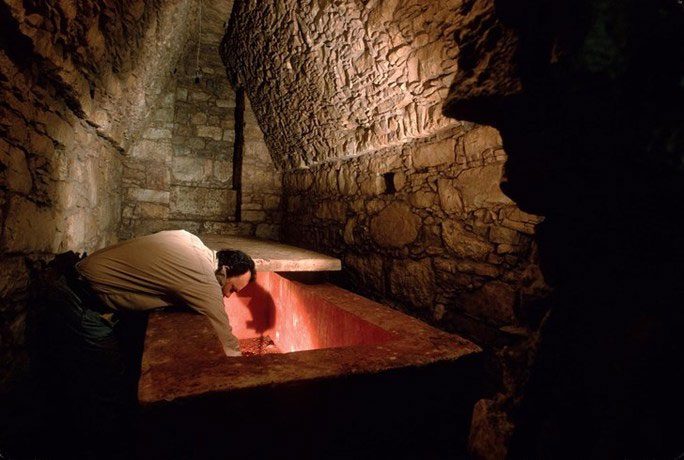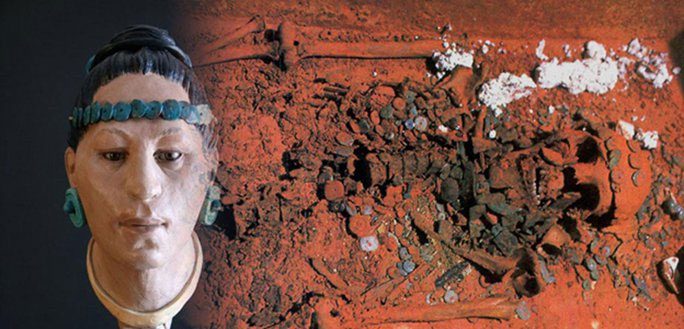After centuries, the tombs of many Maya rulers remain a blood-red hue that could poison grave robbers. This is a real curse that may have caused terrible harm to the Maya people themselves.
According to a recently published study in the scientific journal Frontiers in Environmental Science, Maya cities were severely contaminated during the Classic Period – from 250 to 1100 AD.
A team of scientists led by Professor Duncan Cook from the Australian Catholic University studied soil and sediment at various Maya sites including Chunchumil in Mexico; Marco Gonzales, Chan b’I, and Actuncan in Belize; La Corona, Tikal, Petén Itzá, Piedras Negras, and Cancuén in Guatemala; and Palmarejo in Honduras; Cerén in El Salvador.

A scientist studying the tomb of the Red Queen – (Photo: ANCIENT ORIGINS).
The results are truly shocking: All these cities were contaminated with mercury at concentrations ranging from 0.016 ppm to 17.16 ppm in samples, with the highest being the famed Tikal in the Guatemalan rainforest.
The level of 17.16 ppm at Tikal can be considered a hellish number, as the harmful threshold for humans from mercury in sediment is 1 ppm.
“Mercury pollution in the environment is usually found in modern urban and industrial areas. The discovery of mercury deep in the soil and sediments of ancient cities is difficult to explain until we began examining archaeological data in the region and learned that the Maya had used mercury for centuries,” Professor Cook told Heritage Daily.
Sealed jars filled with elemental mercury have been found at several sites in Guatemala, Honduras, and Mexico; however, another, more common, and mystical substance associated with Maya culture has been found almost everywhere: red paint and cinnabar powder.
According to Maya culture, objects can possess “chu’lel,” meaning “soul force,” found in blood. The color red symbolizes blood. Therefore, the red pigment became popular in rituals. Ancient Maya tombs have been excavated where the remains were covered in bright red for centuries, such as the tombs of warriors and most famously, the tomb of the Red Queen.

The remains of the Red Queen still red as blood after centuries due to being covered in cinnabar, a mineral rich in mercury – (Photo: ANCIENT ORIGINS)
However, these tombs truly carry a “deadly curse,” as they are filled with cinnabar, which is rich in mercury.
Ironically, this color symbolizing authority and power also brought a real curse to the Maya.
The research team emphasized that the levels of mercury found in these once-thriving and mysteriously collapsed cities are dangerous to the health of the ancient Maya.
It is certain that the Maya experienced the effects of chronic mercury poisoning, including damage to the central nervous system, liver, kidneys, impaired vision, reduced hearing, tremors, paralysis, and mental disorders…
Some murals depicting the last Maya ruler named Dark Sun at Tikal show an oddly obese figure, resembling someone with severe metabolic syndrome due to chronic mercury poisoning.
Further research is needed to comprehensively assess the impact of mercury pollution on this legendary community with its “timeless” scientific and architectural knowledge, but scientists believe it significantly influenced cultural and social changes as well as the downfall of the powerful empire.





















































